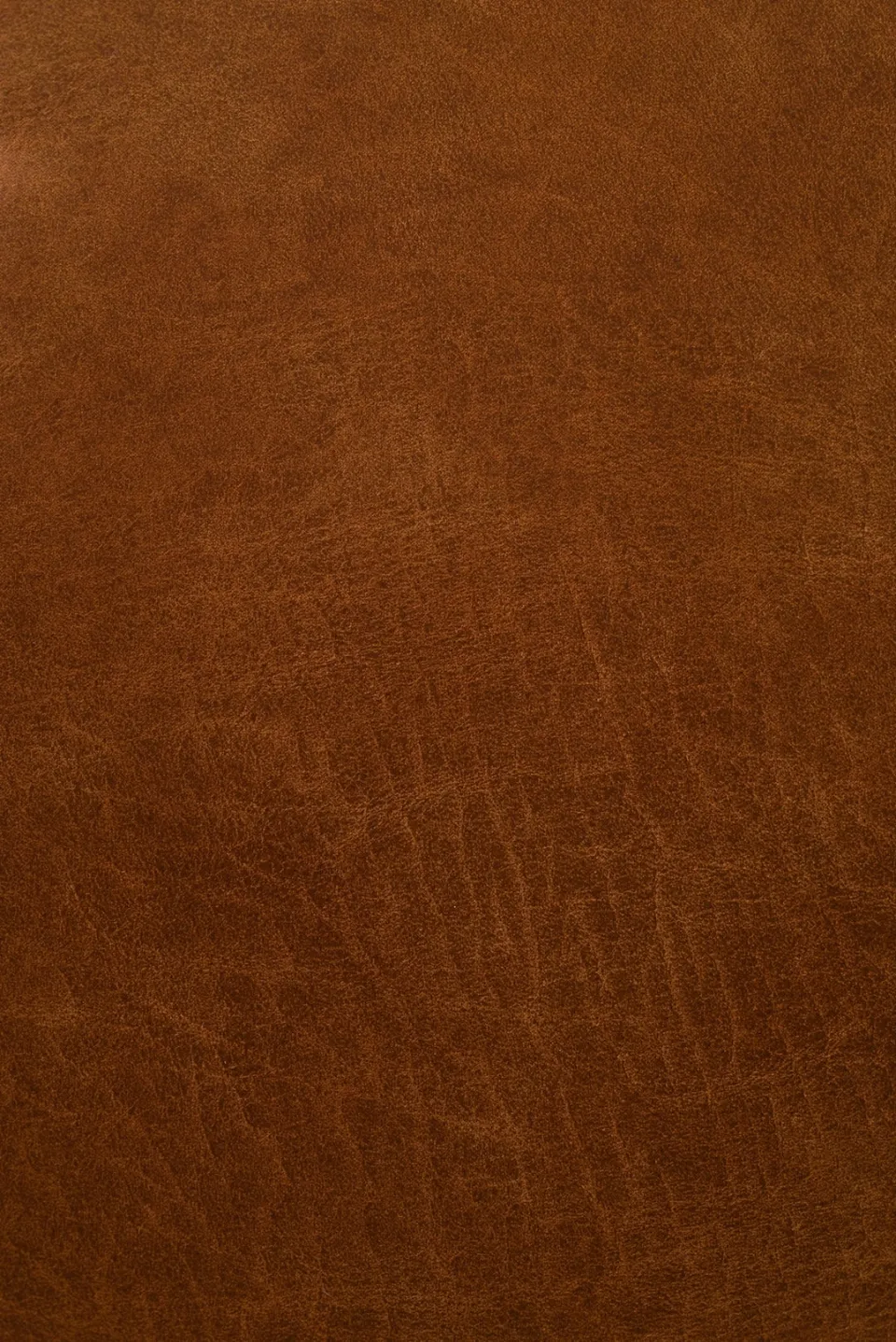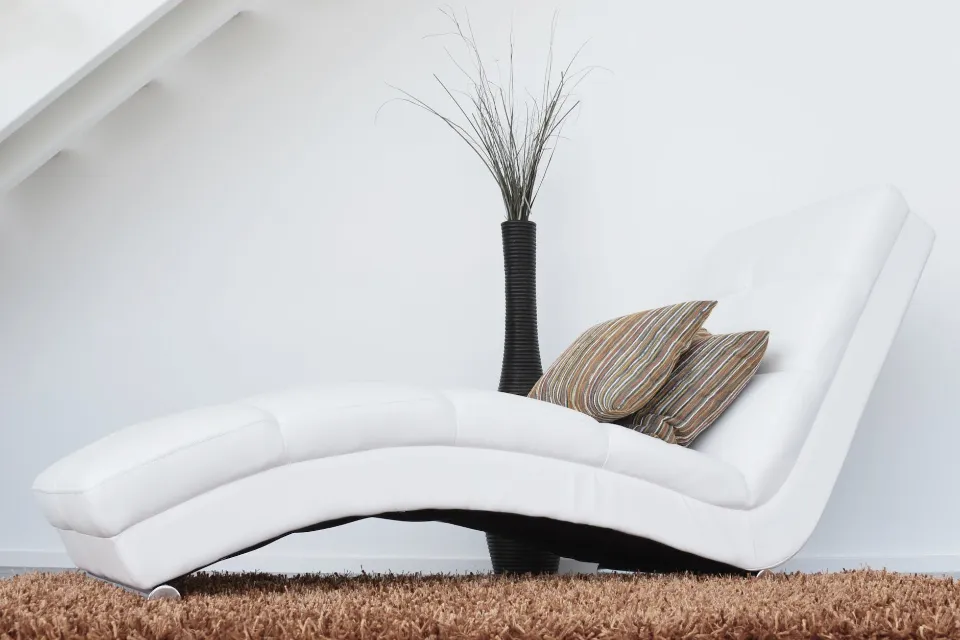
When looking for leather furniture, there are so many different kinds of leather that it can be confusing. Faux leathers, mixed faux and real leathers, and genuine leathers are all available. Bonded leather is frequently used to create goods like clothing and furniture. Though real or fake, is bonded leather? Bonded leather: what is it exactly?
What is Recycled Leather?
Actually, recycled leather is a blend of real and faux leather. It is created using scraps and fibers left over after processing genuine leather, combined with a polyurethane binder. After that, these fibers are rolled together with adhesives to attach them to a paper backing. Some manufacturers may emboss the bonded leather and add an additional polyurethane coating to give it a genuine leather-like texture. Only 10 to 20 percent of bonded leather contains genuine leather. Even though only a small amount of genuine leather is present, some producers advertise bonded leather as real leather.
There are a few other names for bonded leather. When looking at the tag on your furniture or clothing, look for:
- Bonded Leather
- LeatherSoft
- Faux Leather
- Vinyl
- Reconstituted
- Composite

Features of Recycled Leather
Bonded Leather is Cheaper
Real leather and synthetic leather are combined to create bonded leather. It makes use of real leather’s leftover fibers, which are frequently inexpensive. Because of this, manufacturers favor it the most.
Any furniture you buy that has leather in it is almost certainly made of bonded leather. So far, the majority of the office chairs we have encountered are made of bonded leather. A chair made of bonded leather costs between $150 and $350.
Bonded leather is a material used by major chair manufacturers like Serta and La-Z-boy. But the price of faux leather is comparable to that of bonded leather. It costs a little more than bonded leather because this leather is 100% artificial.
Faux Leather Furniture Are Easier to Clean
You may already be aware that faux leather doesn’t absorb water or other liquids. Naturally, it is more difficult to clean materials that absorb water. You will find it simpler to clean your faux leather furniture because this benefit is only offered by the faux leather material.
However, real or genuine leather absorbs water and other types of liquids, unlike faux leather. It might be challenging for you to do simple cleaning. Given the high cost of real leather, you must be extremely cautious and careful when cleaning any furniture made of real or genuine leather. You must avoid using abrasive cleaners at all costs.
To keep real leather furniture from drying out, it must be treated at least twice or three times annually. Your real leather furniture will stay soft and last for many more years than it typically does if you clean it regularly and take good care of it.
Let’s now talk about how to clean bonded leather furniture. Cleaning chairs and other furniture made of bonded leather requires even greater caution. Cleaning and maintaining them is more difficult. Since abrasive cleaners tend to wear off fairly quickly, you cannot clean bonded leather furniture with any kind of abrasive cleaner. Even if you do use clothes to clean, I would advise you to use gentle clothing.
Real Leather Lasts for 10-20 Years
In comparison to faux and bonded leather combined, real or genuine leather is far more durable. Real leather furniture is typically expected to last between 10 and 20 years, but with proper care, they have been known to last even longer. Because they degrade over time like bonded or faux leather, they have a longer lifespan.
Bonded leather, on the other hand, lasts for two to three years. When compared to other types of leather, this kind of material deteriorates very quickly. Some cheaply made office chairs with bonded leather are said to begin to lose their leather finish in less than a year, according to users.
Faux leather lasts between three and five years, but it is not as resilient as real or genuine leather. Given that decent faux leather furniture is much less expensive to make than those using real leather, I believe this to be a reasonable amount of time.
Faux Leather is Not Eco-friendly
Our environment is being greatly impacted by the yearly production of millions of leather fibers and the massive amount of waste that is dumped into the ocean. Plastic poses a significant threat, as we are all aware. Biodegradation requires many years.
PU leather is faux leather, but its production requires fewer and less expensive resources. Additionally, the manufacturing process is not eco-friendly. This plastic is not an environmentally friendly material.
Given that bonded leather incorporates real leather into the mix, it might be thought of as being more environmentally friendly than faux leather. Only real or genuine leather is eco-friendly because it degrades naturally. Compared to faux leather and bonded leather, which do not last as long, it is expensive and durable for more than 10 years.
Bonded Leather Furniture Are the Most Popular
If you’ve read this far, you already know that bonded leather is less expensive and simpler to obtain from the market. As a combination of real and synthetic leather, this leather is frequently used by manufacturers.
The majority of contemporary furniture manufacturers now use bonded leather in sofas, chairs, fancy clothing, etc. Faux leather is additionally well-liked, though. Only a few pieces of furniture use PU leather.
Let’s now discuss whether or not real leather furniture is readily available. There aren’t many types of furniture made of real or genuine leather, as you can see if you browse popular online retailers like Amazon.
Only one or two brands produce the kind of genuine leather office chair I was looking for, despite my extensive searches for one. There is less furniture made of genuine leather available because it is more expensive.
Pros & Cons of Recycled Leather
It is best to weigh the benefits and drawbacks of bonded leather before making a decision so that you are aware of what to anticipate when receiving your furniture or clothing.
Pros:
- Since bonded leather only contains 20% real leather, it is less expensive than genuine leather.
- Contrary to genuine leather, which has visual flaws, it has a smooth, consistent texture.
- Bonded leather is available in a range of hues and designs.
- Bonded leather occasionally has a more natural scent than synthetic leather.
Cons:
- The lifespan of bonded leather is considerably shorter than that of genuine leather.
- As opposed to genuine leather, bonded leather degrades over time and is easily scratched, peeled, and flaked.
- In direct sunlight, the color may deteriorate.
- A vegan product is not what it is. Look for 100% PU Leather if you’re looking for an alternative to animal leather.
- Some of the chemicals that were used to bond the fibers together can eventually leak out of bonded leather.
- It may be difficult to clean bonded leather. Some cleaning agents can be abrasive and gradually strip the leather away.
How to Tell If It is Bonded Leather
Many people mistake bonded leather for real leather, and producers occasionally label bonded leather as such. It will be useful when looking for furniture to know the difference between bonded leather and genuine leather.
Bonded leather is more expensive than genuine leather, which is the main distinction. Because bonded leather is not created from actual leather, it will be significantly less expensive. Genuine leather will always cost more than imitation leather.
Genuine leather will be thicker than bonded leather, which can have a synthetic feel.
Although bonded leather occasionally has a similar feel and smell to genuine leather, their appearance will be different. While genuine leather will have some flaws, bonded leather will have a consistent texture.

Should I Choose Bonded Or Genuine Leather?
I suppose it depends on why you were looking for leather in the first place. Genuine leather offers a higher level of aesthetics, so if you’re shopping for a new leather jacket, you should probably stick with that. But because of its lower cost, bonded leather might be a better option if you’re looking for leather to use in the creation of a DIY project.
Bottom Line
Bonded leather is an affordable, fake leather because it is made of polyurethane and scrap leather. Bonded leather has more disadvantages than advantages, in my opinion. Bonded leather isn’t strong because of the way it’s made; over time, it can easily scratch, peel, and flake. Bonded leather might not be the ideal choice if you’re looking for a genuine leather substitute, especially if you want your furniture or clothing to last for a very long time. If you’re looking for a good synthetic leather, PU leather will be a great alternative to genuine leather.
